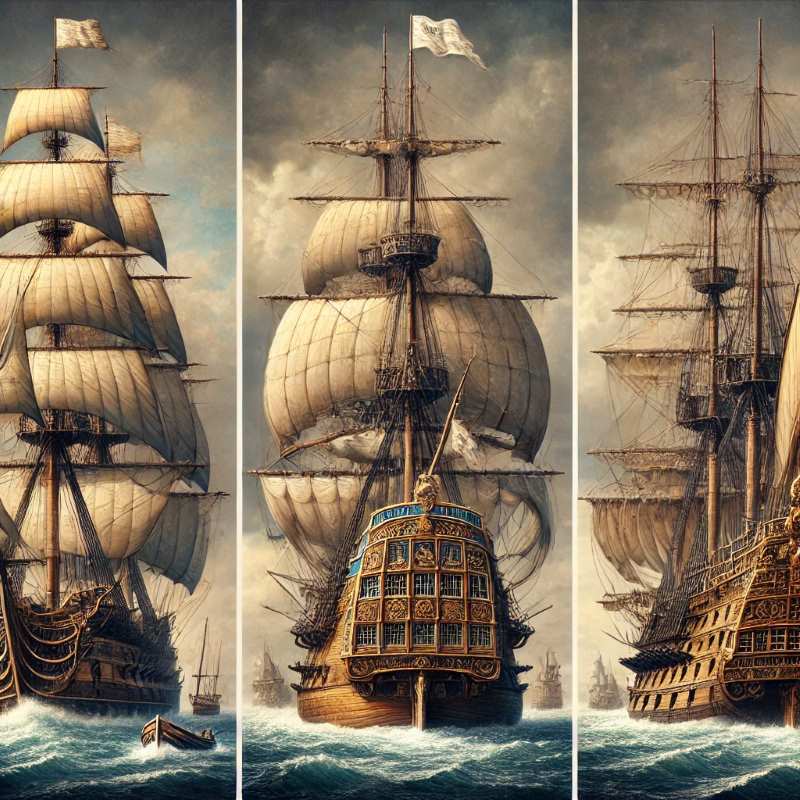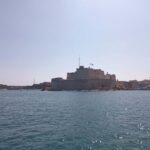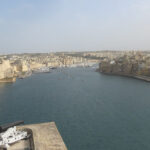| Malta Short Let: Cozy Stay in Gzira | |
|
Sliema Area Modern Designer Finished 2 Bedrooms + Games Room. First floor with Maltese Balcony Large back Terrace with swinging sofa Fully Airconditioned + Full Kitchen 3 TVs, including 65” with backlight. |
 |
|
Book Now: Google Travel | Direct (Cheapest) | Booking.com | Airbnb |
|
The Mediterranean island of Malta has been a strategic linchpin for empires vying for control over the region. Two pivotal events—the Great Siege of 1565 and the French invasion of 1798—highlight Malta’s significance in military history. Although separated by over two centuries, these sieges offer fascinating insights when their military tactics are compared. This blog post delves into the strategies employed during these monumental events, revealing how warfare evolved and how the Knights of Malta adapted (or failed to adapt) to changing times.
Strategic Context
The Great Siege of 1565
In 1565, the Ottoman Empire sought to expand its influence westward and eliminate the Knights of St. John, who were a thorn in their side due to their attacks on Ottoman shipping. The Knights, led by Grand Master Jean de la Valette, prepared to defend Malta with a force of about 6,000 men against an Ottoman army of approximately 40,000 soldiers. See more : Great Siege Military Tactics
The French Invasion of 1798
By 1798, Europe was in turmoil following the French Revolution. Napoleon Bonaparte viewed Malta as a strategic stopover en route to his Egyptian campaign. The Knights of St. John, now weakened by internal strife and lacking support from European powers, faced a well-prepared French force of around 30,000 troops. See More about the French Invasion and the French Blockade of the three cities.
Military Forces and Leadership
1565: Defenders vs. Invaders
- Knights of St. John and Maltese Defenders
- Forces: Approximately 6,000 men, including knights, mercenaries, and local militia.
- Leadership: Grand Master Jean de la Valette.
- Ottoman Empire
- Forces: Around 40,000 soldiers, including Janissaries, sipahis, and corsairs.
- Leadership: Mustafa Pasha and Piali Pasha.
1798: A Swift Conquest
- Knights of St. John
- Forces: About 7,000 soldiers, many of whom were poorly trained and equipped.
- Leadership: Grand Master Ferdinand von Hompesch.
- French Republic
- Forces: Approximately 30,000 troops with a strong naval fleet.
- Leadership: General Napoleon Bonaparte, with key generals like Louis Baraguey d’Hilliers and Claude-Henri Vaubois.
Defensive Strategies of the Knights
Fortifications and Terrain Utilization
- 1565: The Knights capitalized on Malta’s rugged terrain and formidable fortifications. Key strongholds included Fort St. Elmo, Fort St. Angelo, and the fortified cities of Birgu and Senglea and later on Bormla.
- 1798: The Knights still relied on their extensive fortifications, but internal divisions and outdated tactics undermined their defensive capabilities.
Use of Intelligence and Local Support
- 1565: The Knights enjoyed strong support from the Maltese population, who provided intelligence and aid.
- 1798: The local population harbored resentment toward the Knights due to heavy taxation and social inequality, which the French exploited.
Offensive Tactics of the Invaders
Ottoman Siege Warfare in 1565
- Direct Assaults: The Ottomans launched massive frontal attacks, particularly against Fort St. Elmo.
- Siege Artillery: Heavy bombardments aimed to breach fortifications.
- Underestimation of Defenders: The Ottomans underestimated the Knights’ resilience and the fortifications’ strength.
French Strategy in 1798
- Simultaneous Landings: The French executed coordinated amphibious assaults at multiple locations, overwhelming the defenders.
- Exploitation of Internal Divisions: Napoleon capitalized on the Knights’ lack of cohesion and the discontent among the Maltese.
- Naval Blockade: The French fleet effectively isolated Malta, preventing external aid.
Fleet Analysis and Naval Power
Naval Dynamics in 1565
- Ottoman Fleet: Comprised of galleys and support ships, controlled sea approaches but failed to establish a complete blockade.
- Knights’ Naval Capabilities: Limited but utilized small boats for resupply and harassing Ottoman ships.
- Naval Engagements: Minimal large-scale naval battles; focus was on land siege. Knights had significant Maritime combat experience through Piracy.
Naval Superiority in 1798
- French Fleet: A powerful armada with ships of the line and frigates, commanded by experienced admirals.
- Knights’ Navy: Outdated and outnumbered, unable to challenge French naval dominance.
- Impact on Invasion: French control of the sea facilitated troop landings and supply lines.
Exploitation of Enemy Mistakes
Knights’ Ingenuity in 1565
- Overcommitment to Fort St. Elmo: The Ottomans wasted resources on a prolonged siege, which the Knights used to strengthen other positions.
- Countermining Efforts: The Knights effectively countered Ottoman sappers attempting to undermine fortifications.
- Psychological Warfare: High morale and inspired leadership bolstered the defenders, while Ottoman morale waned.
French Exploitation in 1798
- Intelligence Gathering: The French used consular networks and local sympathizers to gather information on weaknesses.
- Subversion: French Knights within the Order acted as spies, further weakening the Knights’ defensive efforts.
- Swift Action: The French capitalized on the Knights’ hesitation and lack of unified command.
Technological and Tactical Innovations
Advances Between the Sieges
- Artillery and Firearms:
- 1565: Use of cannons and arquebuses, but with limitations in range and accuracy.
- 1798: Improved artillery with greater range and destructive power, giving the French a significant advantage.
- Naval Technology:
- 1565: Galleys dominated, reliant on oarsmen and vulnerable to weather conditions.
- 1798: Ships of the line powered by sails, capable of long-range voyages and mounting heavy cannons.
Impact on Tactics
- Mobility: The French could project power rapidly and coordinate complex operations thanks to advances in navigation and shipbuilding.
- Communication: Improved signaling and command structures allowed for better coordination among French forces.
- Siege Warfare: The Knights’ traditional defensive tactics were less effective against the French’s superior siege capabilities.
Outcomes and Their Implications
The Great Siege of 1565
- Victory for the Knights: Despite overwhelming odds, the Knights successfully defended Malta.
- Impact on Europe: The siege became a symbol of Christian resistance against Ottoman expansion.
- Legacy of Adaptation: The Knights’ ability to exploit Ottoman mistakes showcased the importance of adaptability and intelligence in warfare.
The French Invasion of 1798
- French Occupation: The Knights surrendered Malta with minimal resistance.
- Strategic Gain for France: Malta became a key naval base for Napoleon’s Egyptian campaign.
- Lessons in Complacency: The Knights’ failure to modernize and address internal issues led to their downfall.
Conclusion
The comparison of military tactics during the two great sieges of Malta reveals a shift in warfare dynamics over the centuries. In 1565, the Knights of St. John leveraged their unity, superior knowledge of the terrain, and the Ottomans’ tactical errors to achieve an unlikely victory. Their resilience and adaptability were crucial.
By contrast, in 1798, the Knights were unable to withstand the French invasion due to internal divisions, outdated tactics, and failure to modernize their defenses. Napoleon’s exploitation of these weaknesses underscores the importance of innovation and intelligence in military success.
These events highlight timeless lessons in military strategy:
- Adaptability is Key: Staying abreast of technological and tactical advancements is crucial.
- Unity and Morale Matter: Internal cohesion can make or break a defense.
- Exploiting Enemy Weaknesses: Intelligence and the ability to capitalize on opponents’ mistakes are invaluable.
Malta’s storied history serves as a testament to the island’s strategic importance and the ever-evolving nature of military tactics. The legacies of these sieges continue to offer insights for military historians and strategists alike.
This is by far not the end of this analysis, whilst here we compare the two sieges the real mistake was the in-between period. How could the Knights defeat the Ottomans and not the French?. Hint : They were preparing for a second war already by building a second line of defence around Cospicua / Bormla.
See Also : Malta’s History of Sieges and Invasions
References:
- Bradford, Ernle. The Great Siege: Malta 1565. Hodder & Stoughton, 1961.
- Hardman, William. A History of Malta During the Period of the French and British Occupations, 1798–1815. London: Longmans, Green, and Co., 1909.
- Spiteri, Stephen C. The Fortifications of Malta 1530–1945. Oxford: Osprey Publishing, 2008.
- Cole, Juan. Napoleon’s Egypt: Invading the Middle East. New York: Palgrave Macmillan, 2007.
- Sire, H.J.A. The Knights of Malta. New Haven: Yale University Press, 1994.
More about the three cities:
The Three Cities offer a captivating glimpse into Malta’s past and a vibrant present-day experience. From unique activities that showcase the best of each city to straightforward tips on getting there and parking, visitors can easily explore this historic region. Indulge in authentic Maltese flavors with top dining recommendations and discover welcoming spots to stay at suggested accommodations. To get the most out of your visit, consider a one-day self-guided tour that connects the highlights, or uncover hidden gems that lie off the main paths. If you prefer to enjoy Malta from home, delve into books and movies that bring the spirit of the Three Cities to life.








